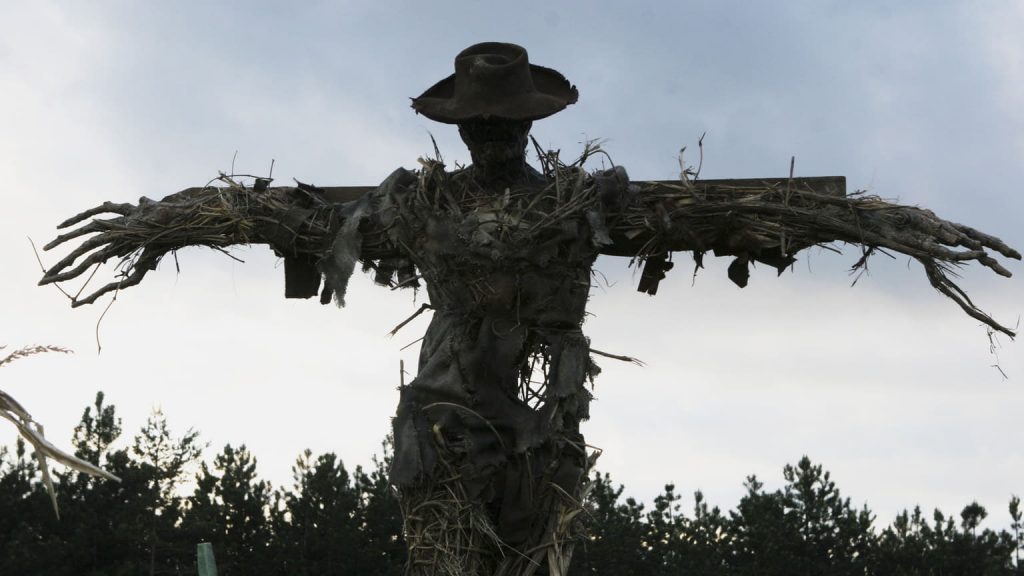
It’s a little known fact – probably because everyone and their Aunt Tilly thinks that they can “do” fundraising – that, in fact, this stuff is hard. It is certainly not splitting the atom hard, or performing brain surgery hard, or being Trump’s Communication’s Director hard. Fundraising is, however, specialized, requiring training, expertise, resources and ongoing support.
Yet, everyone (even Aunt Tilly… she’s a real pain in the ass by the way), feels free to suggest an amazing pearl of wisdom that will surely make all the difference to our bottom-line.
We hear your sigh already. And Jon just beat his head on the keyboard. F78dt fd7qx wte p9fd. That was his forehead typing.
Before you go all Pearl Jam Jeremy on someone for a ridiculous nugget of half-ass wisdom, we share this with you, our tired, weary and under-appreciated nonprofit warrior friends… Our top five list of EPIC SHIT-SHOW FUNDRAISING IDEAS!
Number 5: The Bake Sale for Major Donors
Now, we’re all for yummy delicious baked goods. Sarah prefers the more traditional variety, while Jon dabbles in the Vegan and Gluten-Free aisle (cough, garbage). There is a time and a place for bake sale fundraisers. PTAs, Soccer Clubs, and Dance teams all across the country corner the market on these sales. It’s not, nor should it ever be considered as the primary fundraising vehicle to get $10,000 Major Donors to give. Jon, however, was once ordered to engage, energize, and create synergistic impact with a group of one hundred $10,000 and up Major Donors by inviting them to the office for a bake sale. All goods baked by the staff. This was offered by a new volunteer, fresh on the job for 40 minutes. Clearly, nothing says “Leveraging Impact” like giving a millionaire ten times over a badly glazed cupcake with a powdery-sugar heart on top and XOXOXO scrawled along the bottom. “Oh, thanks, it’s just what I always wanted to eat in my Aston Martin.” Serious donors, major donors, invest in ideas and impact. They invest in change–not muffins, carafe coffee and polite conversation.
Number 4: B-Gats (West Coast) or G-Sors (East Coast)
Sarah affectionately calls this, “The JLo Factor,” having once served at a Bronx-based organization. Some volunteer, board member, Executive Director, somewhere, has ordered you (we know), once more unto the breach dear friends, to call Bill Gates or George Soros or {insert name of world-dominatingly wealthy individual with zero prior contact to your organization} for no other reason than: a) they have money, and b) they are famous. “You should get Adele to be our honoree. She drove through our town for 15 minutes last summer. Call her. Call her! She’ll sing for us all!” “Oh, why don’t you ask Mark Zuckerberg to fund our education program? He’s big on that!” “Hey, let’s ask Hedge Fund Billionaire Ray Dalio from Bridgewater to underwrite our First Night in Westport event because… well… what could be more important?” Hrrmm. Wait. I’m pretty sure you can Google that one to see we’re not lying.
For the uninitiated, here’s why cold stalking celebrity money is no better than, well, stalking: 1) There are 1.5 million nonprofits in the United States. We actually don’t know any fundraisers that haven’t been asked to solicit Bill Gates. So how many letters do you think that adds up to each year – 10,000, 50,000, 100,000? Our guess is to aim higher. Bill Gates isn’t reading these letters. The letter should really be addressed to, “Dear Gates Foundation Staffer that never worked in a nonprofit, but has a few doctorates, can actually split an atom, and helped solve world peace within some change-maker social entrepreneur, MacArthur Fellows retreat.” Bill isn’t going to fund your charity. He’s not… no… shhh… stop. He’s not. 2) Your cause is important to you. It’s not important to everyone. You’re still fighting that basic fact? OK – Consider this: How likely are you to give to a charity that’s fighting the stigma associated with tattoos; or the one that gives prom dresses to poor teenage girls; or the one that gives cows to third-world villages? Everyone has something they’re interested in… hell, Sarah just called her mom to locate her prom dress from 1991, but she got really uppity about people’s ink choices (apparently Sarah chose the more removable option of piercings). Basically, don’t confuse your love of your own charity for a universal endorsement — even if the chosen celeb has identified the cause, they have not identified YOUR charity.
Number 3: An empty Fishbowl at an Annual Gala…
…For major donors to leave their business cards in case they were interested in naming opportunities… Sarah is still shaking her head, as she recalls the conversation that had to be had, with the basic soul who offered such advice (and spent a few minutes in defense of such logic). You may not have been charged to leave a fishbowl out at an annual gala, but we’re guessing you’ve endured something similar in concept and design. Sarah is willing to bet the life of Betsy Devos that no one, in the history of naming opportunities has ever, once, successfully employed the fishbowl tactic. If they have, don’t worry–we may be wrong–but our public education system will be that much safer. Similar to cookies and carafe coffee, serious donors don’t engage in raffle and trade show tactics, particularly when it comes to their family name.
Number 2: All you have to do is create a fun event and they will come
If Sarah and Jon had a bitcoin for every time they were told to create the bestest, funnest, most excitingest event ever with nary a thought to budget or engaging a cadre of passionate people to organize or attend it, they’d have enough bitcoins to buy everything on the Dark Web (Jon has been eyeing that Cold-War era Russian sub).
A drone air-race may be fun. A Single Malt Scotch sampling event on a private yacht may be fun. A lingerie and pajama party featuring Victoria’s Secret models may be fun. However, if you’re given a budget of $500 and your volunteer and donor base is retired, in their 80s and dedicated to fighting alcohol abuse, sexism, and decreasing air-traffic injury, then your creative idea is just plain dumb.
The father of Modern Management, Peter Drucker, once said, “People think ideas move mountains… they are wrong… bulldozers move mountains.”
It’s not about how “creative” the event is. It’s about building (hence the need for bulldozers) from the ground up something that is strategically designed to engage people you otherwise might not be able to engage, so that you have the opportunity to cultivate them. That means carefully honing and cleaving the event to the interests of your volunteers and donors, with a realistic budget and expectations, so that said volunteers are willing to work to make it a success by inviting their friends to get involved and become donors. That’s the key, because no matter how fun or “creative” an event is, if you don’t have a group of passionate people proselytizing from the highest mountain top, ain’t nobody gonna come. Need proof why? When was the last time you went solo to a drone air-race event? Thought so.
And the #1 Worst. Idea. Ever. Anybody can do fundraising!
Do you tell your doctor, “Anybody can perform a kidney transplant!” Do you tell your attorney, “Anybody can draft a legal document that holds up under scrutiny in court!” Do you tell your hair stylist, “I can cut my own hair!” I bet not. Why? You respect those professions and the skills they possess.
Development, and by extension, fundraising, is a highly specialized field, that is asked to perform a dozen highly specialized tasks with nary a box of paperclips to help us. Your next-door-neighbor who was a realtor for two years is not qualified to lead a Development effort. Your niece who just graduated from a fancy private college with a degree in communications and a minor in dead languages, is not qualified to lead a Development effort. And, yet, because development is difficult, because it takes time, because it’s a team effort, boards and senior leadership often lean into what they believe will be the ‘big sell’ hire. The experienced professional is less appealing than the local real estate broker with all the “community ties,” or the former business executive that “understands how to run a business” or your niece with the “family connections” and youthful eagerness. In time, for sure, any one person can grow into a new role and excel. We all start somewhere. The issue of respect is no small factor. In fact, in our not-so little community, we like to play under/over with the how long that former real-estate broker/finance-exec/communications major actually makes it in their newly anointed chief fundraising role–turns out, not much longer than the average nonprofit professional. To our knowledge, no survey exists to back up the data for our “Is-Sarah-or-Jon-buying-this-week” bet, but we’re guessing you’ve witnessed and experienced similar trends.
Implicit in the notion that “Not everyone can do this shit,” is the tiny little detail that it costs money to make money. If that fundamental truth were not the case, then why even hire and pay development professionals in the first place? Just prop up a cardboard cut-out next to an empty plastic water bottle and a sign that says, “Hey fuckers, give now!”
It’s really very simple: better people can do better things, and more people, can do more things. You spend time trying to find a “good” plumber, right? You know a quarterback doesn’t play against the opposing team all by his lonesome, right? Hell, why does Harvard raise hundreds of millions of dollars every year? Do they all run around waving their scarlet and gold Gryffindor wands and “Poof” a unicorn leads them to a pot of gold? No. They have hundreds of Development staffers; they hire the best, and they pay them very well to attract and retain that talent. Yes, of course, somewhere along the way you’re going to misfire and hire a hack who’d rather play Angry Birds all day, but social psychologist Douglas McGregor’s famous Theory X vs. Theory Y primer posits that there are truly very few Theory X employees out there — i.e., most of us know what we’re doing, are self-motivating, dedicated, and can get the job done.
We don’t want to bake cookies for one-percenters. We don’t want to write a sad “look at me!” letter to Bill Gates’ McArthur Genius Fellow who is only funding global solutions-by-straws this week. We don’t want to put out fish bowls to source donors for a building that will provide desperately needed healthcare to impoverished families. We don’t want to design lavish parties with a budget of $500 and donors that have modest desires and just want to see their funds put to good use. We just would like some modest recognition that this shit is hard and maybe we know what we’re doing.
Trust us. Just a little. You won’t regret it.
– Jon & Sarah






 Yep, we went there.
Yep, we went there.


